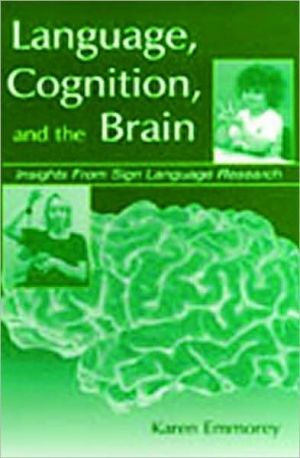Language, Cognition, and the Brain: Insights From Sign Language Research
Once signed languages are recognized as natural human languages, a world of exploration opens up. Signed languages provide a powerful tool for investigating the nature of human language and language processing, the relation between cognition and language, and the neural organization of language. The value of sign languages lies in their modality. Specifically, for perception, signed languages depend upon high-level vision and motion processing systems, and for production, they require the...
Search in google:
Once signed languages are recognized as natural human languages, a world of exploration opens up. Signed languages provide a powerful tool for investigating the nature of human language and language processing, the relation between cognition and language, and the neural organization of language. The value of sign languages lies in their modality. Specifically, for perception, signed languages depend upon high-level vision and motion processing systems, and for production, they require the integration of motor systems involving the hands and face. These facts raise many questions: What impact does this different biological base have for grammatical systems? For online language processing? For the acquisition of language? How does it affect nonlinguistic cognitive structures and processing? Are the same neural systems involved?These are some of the questions that this book aims at addressing. The answers provide insight into what constrains grammatical form, language processing, linguistic working memory, and hemispheric specialization for language. The study of signed languages allows researchers to address questions about the nature of linguistic and cognitive systems that otherwise could not be easily addressed.
PrefaceNotation Conventions1Introduction12The Structure of American Sign Language: Linguistic Universals and Modality Effects133The Confluence of Language and Space734Psycholinguistic Studies of Sign Perception, Online Processing, and Production1175Sign Language Acquisition1696The Critical Period Hypothesis and the Effects of Late Language Acquisition2057Memory for Sign Language: Implications for the Structure of Working Memory2278The Impact of Sign Language Use on Visuospatial Cognition2439Sign Language and the Brain271Epilogue315App. AHandshapes in American Sign Language319App. BLinguistic Distinctions Among Communication Forms in Nicaragua321References323Author Index363Subject Index375








